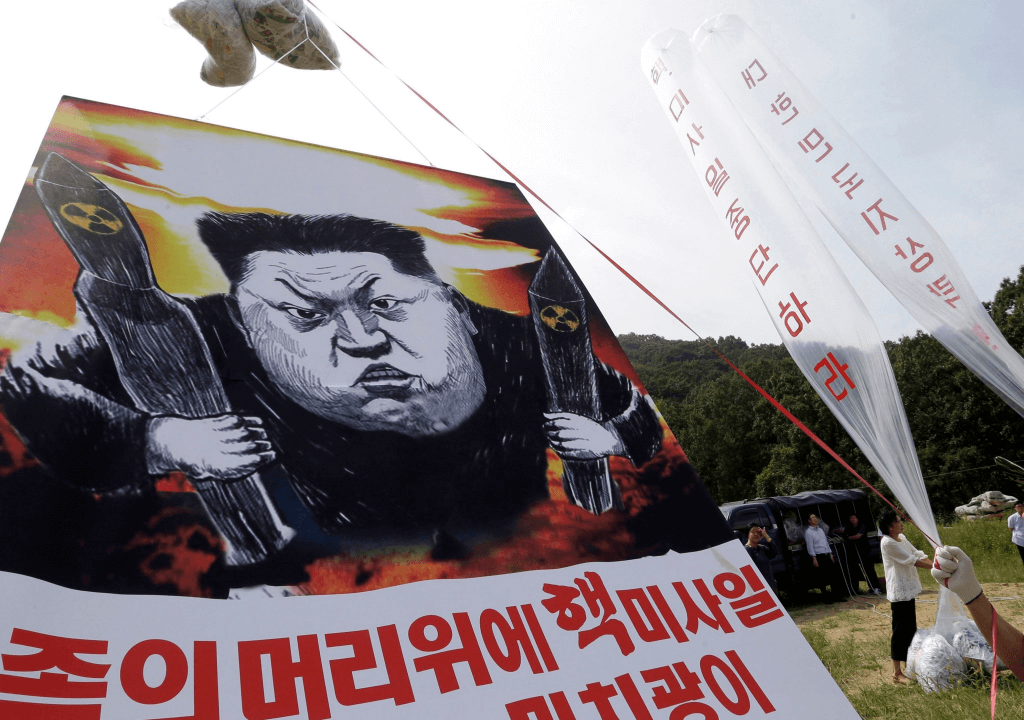When considering one of the most tense borders, the border between the Koreas undoubtedly stands out. The democratic Republic of Korea, also known as South Korea, and the Communist Democratic People’s Republic of Korea, widely referred to as North Korea, epitomize the poignant saga of separated brethren, yet remain in an unyielding state of division. Both Koreas yearn for reunification, but they are adamant about maintaining their respective ruling systems, which presents a significant obstacle.
Each Korea employs various tactics to influence people on the other side and aims for reunification. Previous military efforts in the 1950s culminated in the famous Korean War. Now, with both countries heavily armed and allied with powerful nations, war is not a viable option. Both sides understand that conflict would lead to regional collapse. Instead, they employ different strategies, one of which involves balloons. Yes, balloons are used as a weapon in a “Balloon War”, but not a lethal one. As air flows freely across both Koreas and balloons are used as a tool, South Koreans utilize them to convey information to North Koreans, who live under a tightly controlled regime that restricts access to external information sources. North Korea views this practice seriously, as it can heavily influence its people, and thus, they denounce this act as littering on their land. This tactic has undoubtedly heightened tensions between these two hostile neighbors or estranged brothers.
The propaganda mission from South Korean activists turned into a “balloon war” when North Korea sent balloons back with waste, including litter and human waste. The balloon war is intensifying, according to the latest reports. According to South Korean media, last Thursday, the Free North Korea Movement, a group of North Korean defectors, declared that it had dispatched 10 large balloons filled with 200,000 leaflets criticizing the regime of North Korean leader Kim Jong-un, along with US dollar bills and flash drives loaded with K-pop. The group further disclosed its dispatch of balloons loaded with approximately 2,000 USB flash drives containing songs by South Korean singer Lim Young-woong, along with other K-pop songs and K-dramas, into North Korea on May 10. This action potentially triggered the recent surge of garbage-filled balloons in the opposite direction.
In retaliation, North Korea released almost 1,000 balloons containing rubbish, cigarette butts, and what appeared to be excrement to protest the groups in the South. There are reports that fears are growing that the North could resume its “Dirty” campaign in response to the activists actions. According to South Korea’s Yonhap news agency, North Korea was ready to dispatch “One hundred times the quantity of toilet paper and filth” it had previously used against the South.
There was a brief period when South Koreans avoided the balloon mission after the South Korean government banned the process of disturbing their neighbor. However, the court later scrapped the ban, leading to further escalation of the balloon mission from the South. North Korea’s actions have only intensified the situation. The tit-for-tat balloon campaign or balloon war has deteriorated bilateral relations, leading South Korea’s president, Yoon Suk Yeol, to suspend a 2018 agreement aimed at easing cross-border tensions. Earlier reports suggested that North Korea agreed to temporarily halt balloon war following Seoul’s warning of “Unendurable” measures, such as the resumption of loud propaganda and pop music broadcasts via loudspeakers positioned along the demilitarized zone (DMZ), a strip of land dividing the peninsula since the end of the 1950-53 Korean War. The latest decision by Yoon Suk Yeol means that the South could resume live-fire drills, as well as restarting anti-Kim broadcasts near the border. Restarting the broadcasts would enrage the North, which has previously threatened to destroy the loudspeakers using artillery if they were not turned off. South Korea says it will restart loudspeaker propaganda broadcasts into the North after Pyongyang sent hundreds more rubbish-filled balloons across the border. “We will install loudspeakers against North Korea today and carry out the broadcast”, the president’s office said in a statement on Sunday. Both sides blame each other and escalate measures to increase the suffering of the other.
On Saturday, the Seoul city government, along with officials in the neighboring Gyeonggi Province, issued a text alert to residents, cautioning them about potential new balloon sightings. South Koreans are quite angry at North Korea, not only because Korean content is considered trash by the North. According to Seoul Mayor Oh Se-hoon, “North Korea is making another low-class provocation with trash balloons against our civilian areas”. At the same time, Seoul’s military calmed down citizens by stating that there were no substances harmful to safety in the latest batch of balloons, which contained waste paper and plastic. However, it cautioned the public to keep their distance and promptly report any balloons to the authorities. All these actions by the “Balloon War” have caused ties between the two Koreas to dip to one of their lowest points in years, with diplomacy long stalled and Kim ramping up his weapons testing and development, while the South draws closer to major security allies Washington and Tokyo.








